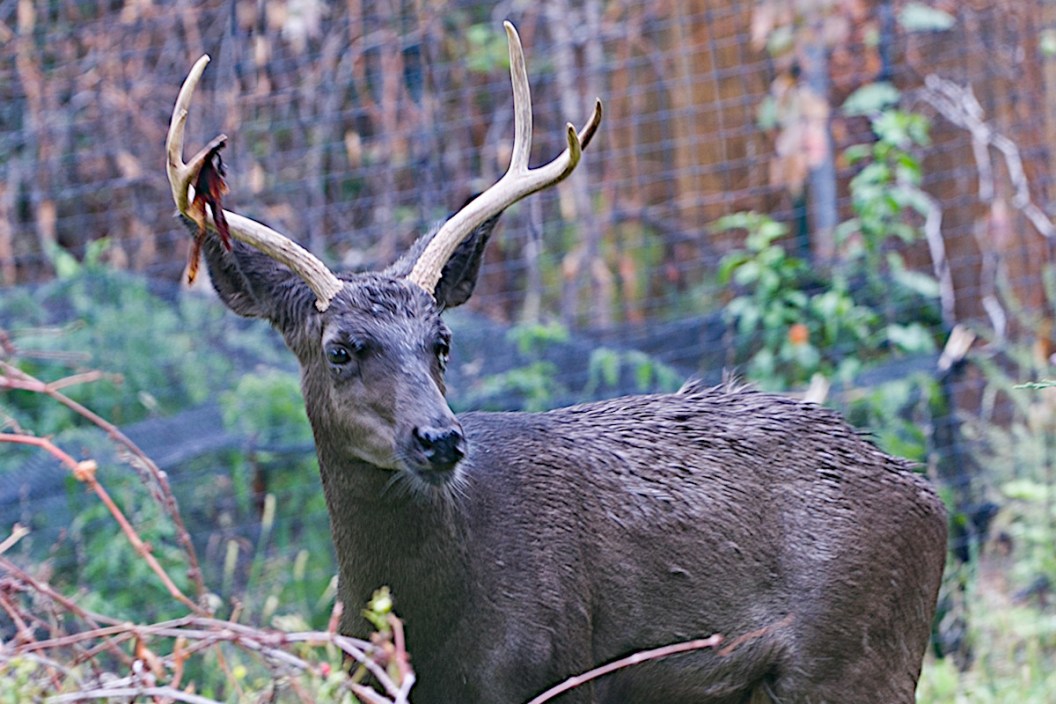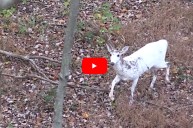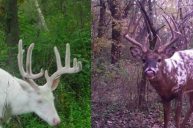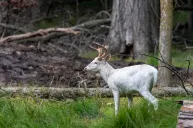Most deer hunters know about albino, piebald and leucistic whitetail deer. These color varieties can be rare depending on the location. Many hunters will go their whole lives without ever seeing one in the flesh. Although some areas may have more instances of the recessive genes that cause this mutation. Even then, hunters are much more likely to encounter a piebald and a lecuistic animal than a true albino deer here in the United States. The true albinos are usually characterized by their pink retina pigment. As rare as they are, albinos are not the most uncommon deer for mule and whitetail hunters to encounter in the wild.
There is another color phase that falls on the complete opposite side of the spectrum and makes deer appear much darker, from a chocolate brown to a midnight black. We are talking about deer affected by another recessive trait known as melanism. The interesting thing about this condition is that it seems to occur more often in some parts of the country than others. There's still a ton scientists don't know about this condition in mule and white-tailed deer, but the little we do know is quite fascinating.
What Causes Melanism?
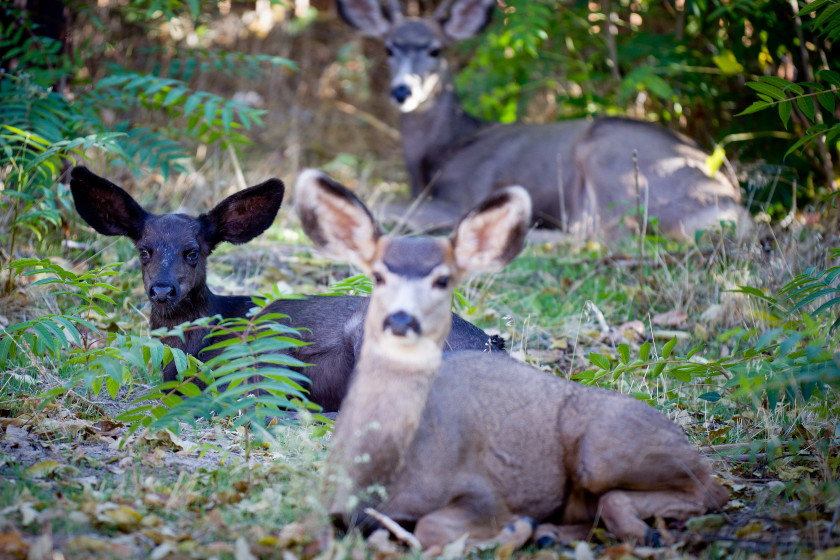
ncognet0 via Getty Images
While albinism and leucism are characterized by a full or partial lack of melanin or pigment, melanism is the exact opposite. This is what happens when an animal has too much melanin. Just like albinism, it's believed to be the result of a genetic mutation of a single gene.
While albino and piebald deer are dealt a significant disadvantage in the camouflage department that makes them more susceptible to predators, melanism seems to have the exact opposite effect. It appears to be a real survival advantage because a dark-colored prey animal blends in extremely well with trees, leaf litter, and grasses, just like a normally colored deer. Depending on the animal, melanism can be a common condition. For instance, jaguars are often documented with this color variation. No doubt you've seen a black squirrel or two in your outdoor adventures, too. For deer, though, melanism is exceedingly rare. In fact, it's said the condition may only affect one in 10,000 deer.
Additionally, melanistic deer seem to have much more variance in color. The darkest ones seem to be jet-black in appearance, but you'll also see others that are simply a darker or chocolate shade of brown. Some of these deer take on a "muddy" appearance that might fool many hunters into simply thinking they just saw a dirty swamp deer.
How Rare Are Melanistic Deer?
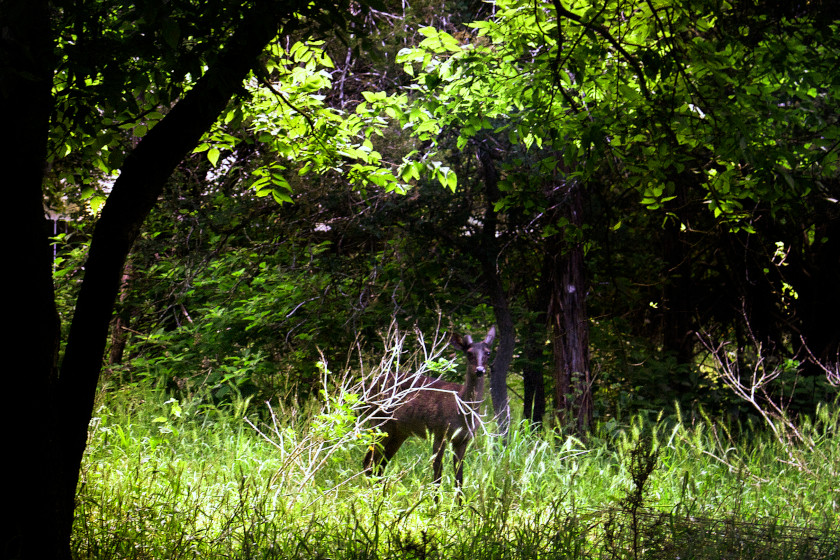
Benny Winslow via Getty Images
It's hard to answer this with any certainty since they occur so infrequently. We've seen numbers saying a true albino might be a 1-in-10,000 occurrence while piebalds might be 1-in-1,000. As far as we know, melanistic deer have only been documented in 29 states. This leads us to believe it must be the rarest deer color phase of all. As further proof of that, consider that in 2016, when 14-year-old Brooke Bateman of Dallas downed a wide 6-point melanistic buck with bleached-white antlers and a jet-black face and body. It was the only black deer reported in Texas that year. Hunters in the Lone Star State kill about 600,000 deer a year. So, to be the only one to shoot a black deer, that is overcoming some serious odds!
Coincidentally, it seems Texas is the place to be for the genetic trait for black deer. The Quality Deer Management Association reports a 1999 Texas Tech University study found the color phase to be more common in eight central Texas counties than anywhere else.
These counties include Guadalupe, Comal, Caldwell, Burnet, Blanco, Hays, Travis, and Williamson. Why? No one really seems to know for sure. Maybe it's something in the water. Maybe it's just something that's been in the herd forever. Whatever the case might be, it seems like most melanistic deer harvested these days come from Texas, and usually from those eight counties.
Famous Melanistic Deer
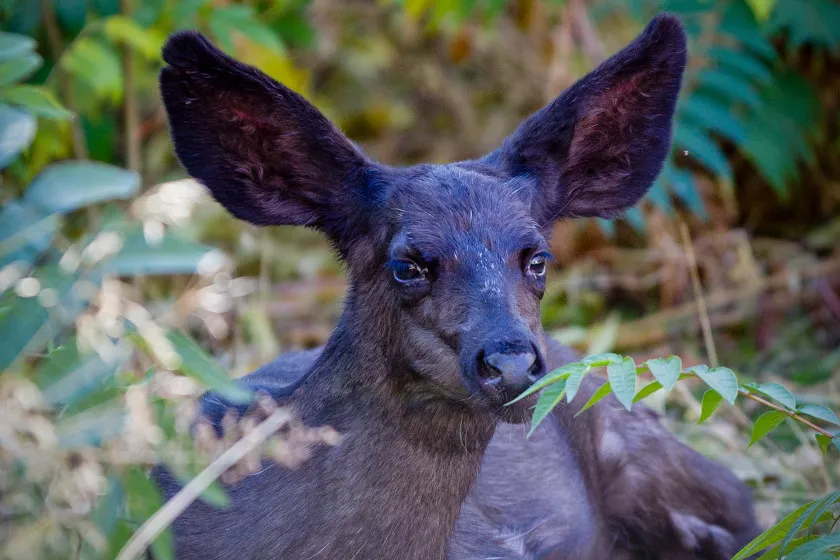
ncognet0 via Getty Images
Every time a hunter downs a melanistic deer, it seems to take the deer hunting world by storm. As we already mentioned, Brooke Bateman's 2016 Texas 6-pointer took the Internet by storm. One of the first photos of one I recall seeing was Andrew Hargrove's 2002 Pennsylvania whitetail. The beautiful 8-pointer had a lighter, chocolate-brown muzzle, but its back, face and ears were jet-black. This was one of the first whitetail deer to go wildly viral on the internet, and many people thought it had to be a Photoshopped image. We're not surprised Andrew decided to go with a full body mount.
Another famous picture is this photo of a woman with a super-dark Texas melanistic buck sometime around 2004. That photo made its rounds so many times, it's hard to track down the details. All I was able to find was that the photo came from somewhere in Texas. A few years ago, I had the privilege of speaking with George Blitch, who harvested a beautiful melanistic 10-pointer he called Black Beauty in an undisclosed part of Texas in 2016. The buck was rather camera shy, and he spent years trying to get just one trail camera photo of it. Eventually he got those pictures and harvested the buck too.
While most melanistic deer photos hitting in the internet have been whitetail bucks, there have also been a number of black fawn photos showing up recently.
The odds of shooting a melanistic buck are probably akin to winning the Power Ball lottery. You might have a better chance of shooting a world-record deer than you do a black one. So, if you ever see one or have the opportunity to see or shoot one, count yourself lucky. This kind of whitetail deer just doesn't come around every day!
For more outdoor content from Travis Smola, be sure to follow him on Twitter and Instagram For original videos, check out his Geocaching and Outdoors with Travis YouTube channels.
